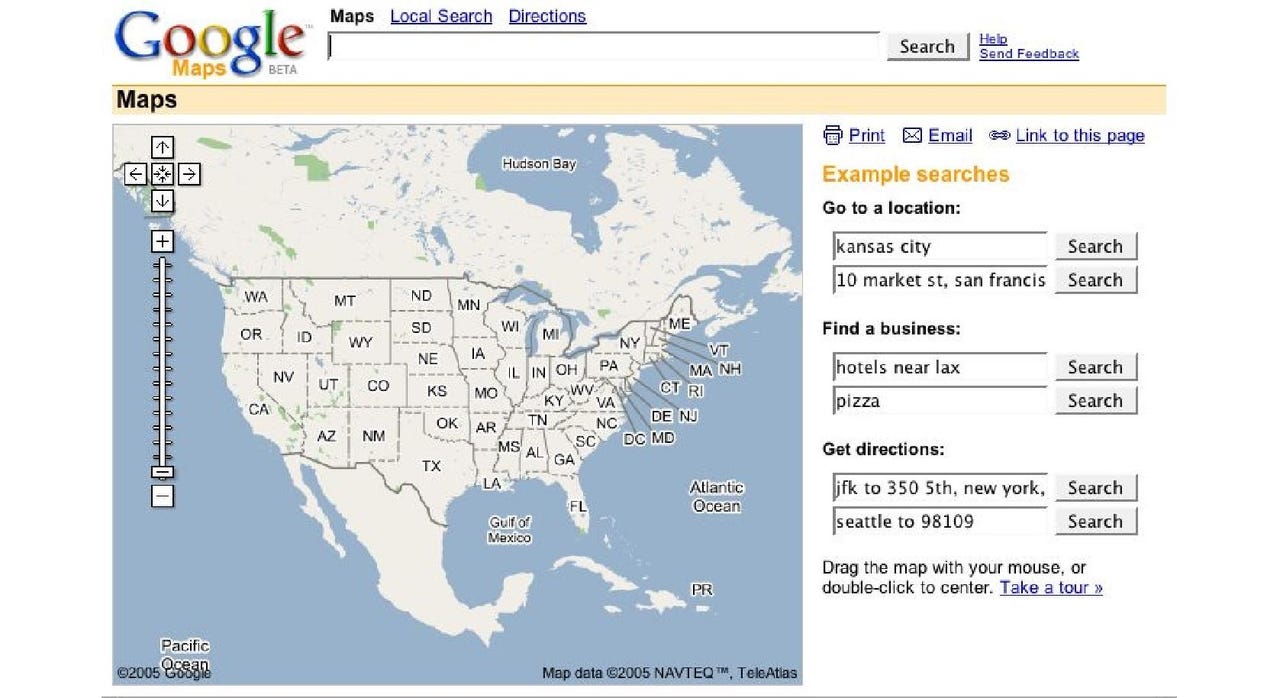Google Maps turns 15: A look back on where it all began

From whiteboard to browser
It's been 15 years since Google Maps was launched by Australian software engineer Noel Gordon, Stephen Ma, and Danish-born Rasmussen brothers Lars and Jens.
"What I remember that day mostly was that we had, what we considered, a pretty amazing launch. We served some 10 million maps on the very first day. A year later we were doing 60 million maps a day, and today it's over a billion people using Maps every day," recalls Gordon, who is also now a software engineer at Google.
The copy of the earliest sketch was drawn up during a period when the team of four were trying to sell their idea to Google's co-founder Larry Page, who later told them: "We like the web".
Conveniently, Asynchronous JavaScript XML was invented around the same time, which enabled the co-founders to move their idea onto the web.
"The surprising thing is that we wrapped all this up and put it into a web browser, which had never been done before. This made maps fast and fluid, and it was a completely different experience and no one had seen this before … The fluid experience was the most important thing about maps," Gordon said.

One map at a time
Google Maps was launched incrementally. According to Gordon, it was mainly because at that time, Google did not have all the world's data yet, and therefore it was impossible to map everything at the get-go.
Attention to detail
Unlike other maps that existed in 2005, Google Maps was designed in a way that featured all the "intricacies of our drawing", Gordon explained.
The image pictured is an example of the attention to detail that was added to Google Maps at the time. It's the junction going into the San Francisco International Airport, featuring all the roads going under and over it.
"If you look at the United States at the time, maps were just drawn as single solid lines. We decided to draw maps at a much higher-level … We looked at the quality features of the maps and we thought they were low [quality], and we decided to list the quality of maps in a different class."
Set in stone
While the behind-the-scenes technology work continued, Gordon admitted time was also spent debating about the name of the product.
"The funny thing here is that I remember we had a lot of internal debates and a lot of external debates about what should we call this product. We started off as Google Maps … and we vacillated on the name a little bit, until we said, 'enough'," he said.
To mark the occasion, the name was set in stone -- literally -- which remains on display at Google HQ.
The Google Maps 'album cover'
The iconic Google Maps push pin was designed by Rasmussen, which Gordon attributed to as "a fantastic job of showing you something's right there", but "totally out of the way and not interfering with what you're looking at. It's a beautiful piece of design".
A refreshed icon
As part of a slew of updates that Google Maps announced to mark 15 years since its launch, the technology giant has given the Maps icon a refresh.
"The new icon keeps a really core part of something that was always there in Google Maps from the very first days and the map in itself," Google product management director Oren Naim said.
"But we also think that the map actually reflects really where we're going with the product itself. It's not only about directions, it's not only about getting from A to B, but it's about helping you find new places to go to, it's helping you decide where is it that you should go and, ultimately, helping you explore the world."